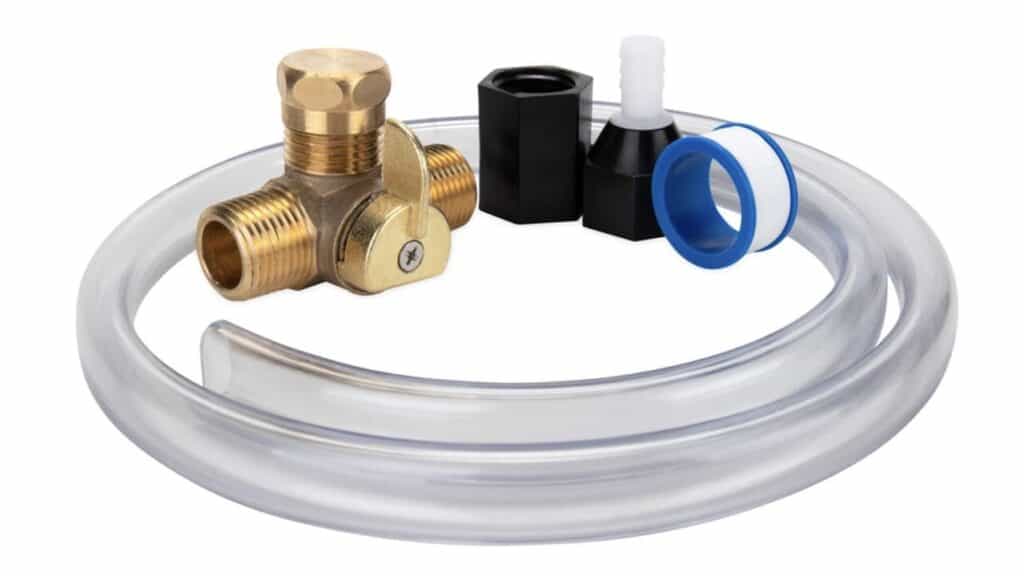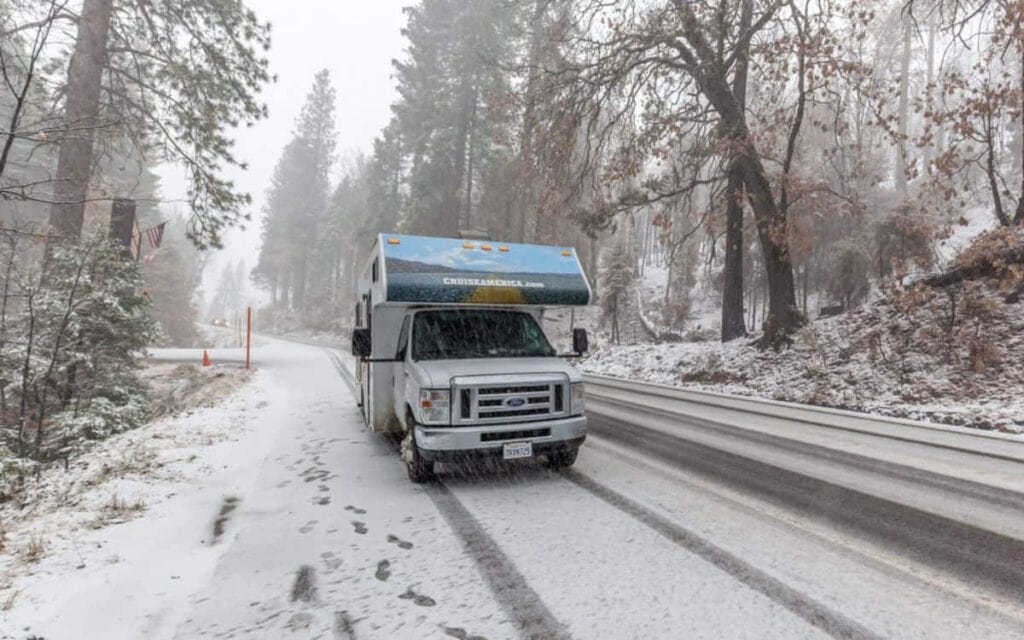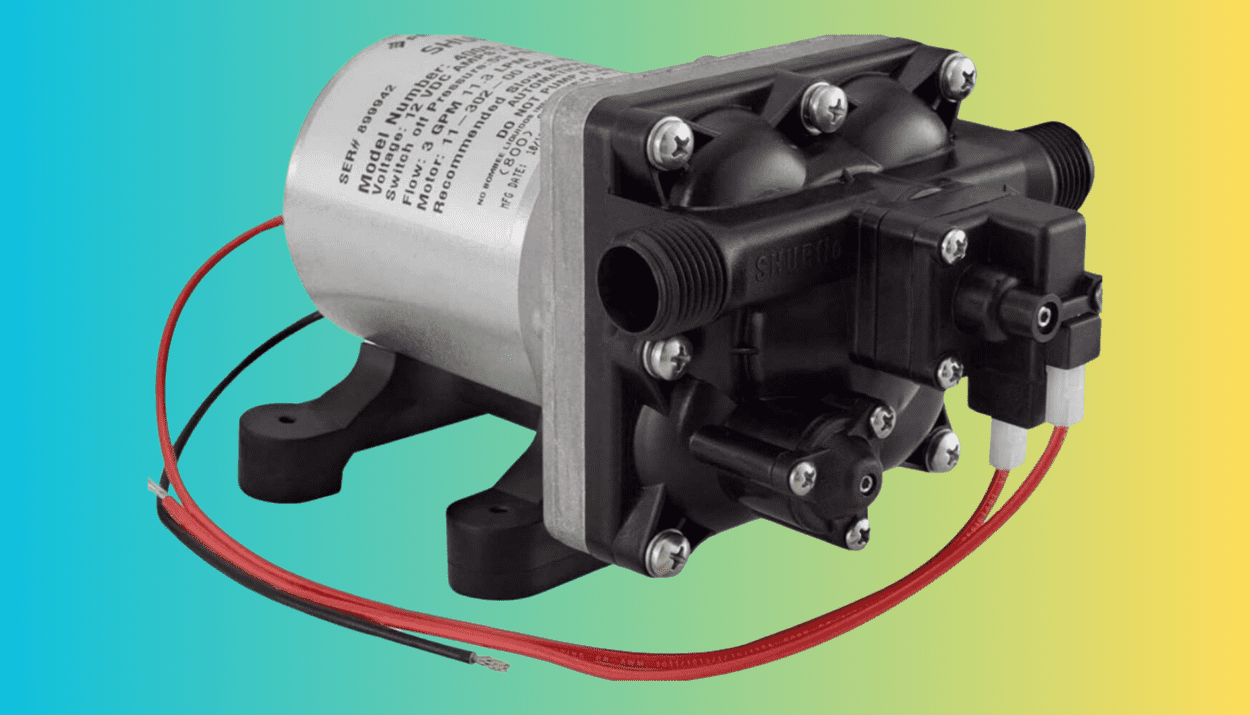If your RV water pump is not working when winterizing, it is mostly due to air in the lines, which can affect the flow of antifreeze through them or an open valve that causes fluid leakage. In addition to that, the lines might get clogged, or the valves might not be correctly positioned, which is why you may need to fix your RV water pump not working when winterizing.
If you’re one of the 1 million Americans who live in an RV permanently or plan to go out RVing in the winter, winterizing your RV will prevent the water within the pipelines from freezing.
What Is Winterizing?
Winterizing means preparing something for extremely cold weather or the winter. Not only do you want your RV to stay warm during winter, but you also want the water in your RV water pipes to not freeze. In relation to RVs, winterizing prevents the water within the vehicle’s pipelines from freezing by adding an antifreeze. This antifreeze will ensure smooth, continuous water flow, allowing you to utilize the water in your storage tank without any hindrance.
Process Of Winterizing RV’s Water Lines

Source: CanadianTire
Let us first look at how winterizing is done to better understand why your RV water pump does not work when winterizing. There are several steps to the process:
- Draining the water within the lines: This is the first step in the process. You can drain the water by opening every faucet within your RV and the valves. You should start by draining the fresh tank, then the black and gray water.
- Switch the bypass valve: This prevents water supply towards the heater. As a result, the antifreeze would not get wasted by entering the heater.
- Pump antifreeze through the water lines: Next, turn on the water pump and run the antifreeze through the water lines. This will distribute the antifreeze throughout the lines and prevent water from freezing within them.
- Add antifreeze to certain spots: You can also add antifreeze to drains and toilets.
You should close every faucet and position the valves correctly before refilling water into your storage tank.
Why Is RV Water Pump Not Working When Winterizing?

Source: RVingKnowHow
Now that we have taken a quick overview of the winterization process, let’s look at why your water pump may not work.
| Reason | Details |
|---|---|
| Low pressure generated by pump | One of the most common causes of the water pump not working is the inability of the pump to generate pressure. If air is within the water lines, the pressure gradient that causes water to flow through the pipes is disturbed. Consequently, the pump cannot generate enough pressure to distribute the antifreeze throughout the system. |
| Open or leaking valves | If valves are left open or not airtight, the pressure within the lines is again inappropriate. Thus, the pump cannot transmit fluid at the required pressure throughout the water lines. Additionally, if the valves are leaky, any antifreeze pumped into the water lines would be lost. This might give the impression that the water pump is not working. |
| Bypass valve switched incorrectly | If the bypass valve is switched to direct water towards the heater, antifreeze will also flow. Thus, antifreeze would be wasted by flowing to the heater instead of the rest of the water lines, again giving the impression that the pump is not working. |
| Low-point drain valves | These valves outside the RV are meant to drain water from the storage tanks. However, if these valves become leaky, they might allow air to enter within the piping. As a result, the flow of fluid through the water lines will be hindered, leading to the inability of the water pump to function effectively. |
| Improper connections | In addition to the valves, the connections within the water lines might either be leaky or not in the right direction, leading to loss of the antifreeze as it flows through these water lines. These might also allow air into the water lines, leading to the pump malfunctioning. |
| Clogged lines | In addition to air within the water lines, clogged lines can also be a cause of hindrance to the flow of water through the pipelines. This again would lead to ineffective pumping of water. |
| Non-functioning water pump motor | If the water pump cannot pump water, there could be an issue with the motor. Additionally, the power supply to the water pump might be compromised, leading to inadequate or a complete lack of water pumping. |
What To Do With RV Water Pump Not Working When Winterizing
Having discussed the causes of the RV water pump not working when winterizing, let’s now focus on what you can do to solve these issues.
- Check the valves and connections within the water lines. If these are not airtight and tend to leak, you should consider replacing them or contacting a professional to replace them for you.
- If the valves and connections are intact, look at the bypass valve. The bypass valve is switched incorrectly if the antifreeze is directed towards the heater. You should reverse the flow of the bypass valve in this case.
- If the problem persists, there might be some hindrance to the water flow. This might be due to clogged lines or air within the water lines. Clogged lines should be cleaned. You may hire a trained professional if you encounter difficulty locating the blockage or cleaning the water lines.
- Once you have ensured no clogged lines, air within the water lines may be the culprit. In this case, you should prime the RV water pump.
- If that doesn’t solve the issue, there could be an issue with the water pump motor. Check whether the motor is on or not. You can use a multimeter to check whether there is power supply to the water pump. If the motor is making noise or is not turning on despite the normal power supply, the fault may lie in the motor itself, and you should consider replacing it.
How To Prime RV Water Pump?

Source: Amazon
Since air is the most common culprit preventing the RV water pump from working properly, let’s now focus on answering the important question of how to prime the RV water pump. Here are the steps on how you should go about the process of priming your water pump:
- Fill up the freshwater storage tank

- Locate the bypass valve.

- Make sure that the bypass valve and other valves are closed properly.

- Open the water tap at any spot in your RV, be it the kitchen or bathroom. Make sure that all other faucets are closed.

- Turn on the water pump.

- Water flows from the freshwater storage tank through the water lines and exits through the faucet. Any air inside the water lines will be removed through the faucet. The pump should be operated for several minutes to ensure the removal of all the air.

- Now that you know how to prime an RV water pump, you should repeat these steps with all other faucets in your RV so that air is removed from all the water lines.
Source of images: YouTube
For a better understanding of how this process works, here is a simple and easy-to-understand video by the YouTube channel Kimberly – The Caravan & Motorhome People explaining the process of priming your RV water pump:
Which Antifreeze Should You Use For Winterization?

Source: Amazon
After taking a look at how to prime the RV water pump, let’s get back to winterizing. Regarding the antifreeze you should use, I recommend the RecPro AntiFreeze. This has a great temperature rating of -50 degrees and does not damage steel, copper, or brass plumbing.
In addition to that, it is made from non-toxic materials. At the time of writing, Amazon had a great deal for this antifreeze, where you can get four packs of 1 gallon each for $69.95.
FAQs
Can you winterize your RV water pump without antifreeze?
You may use alternatives to antifreeze, such as glycerine, ethanol, or methanol. However, I do not recommend using these as antifreeze since they are not as effective as antifreeze, and ethanol and methanol are flammable at concentrations higher than 3%.
You may use compressed air to winterize your RV water pump. While this is effective, it requires an air compressor, which is not easily available. The process is, therefore, slightly tougher. You might not be able to do it yourself compared to using antifreeze, which is easily available, and the process is not too difficult.
When should you contact a professional to help prime an RV water pump?
If you are struggling with the priming or the winterization process, you might want professional help. Furthermore, if the issue is not resolved even after following all the steps mentioned above, you should hire a technician to investigate the issue. Replacing the motor of the water pump might also require professional help.
How to troubleshoot a non-functioning RV water pump?
If your RV water pump is not working, you should follow these steps:
- Check whether there is water in the freshwater tank. If the tank is empty, you should fill it up.
- Next, check whether there is any leakage within the valves or the water lines or if the lines are clogged or the connections are loose. These should be fixed by priming, cleaning, replacing faulty parts, and tightening connections.
- Next, check whether there is power supply to the water pump through a multimeter. Check to see if there is fuel in the RV and whether it is charged.
- If your pump has not been winterized, there might be no water flow. Therefore, you should carry out the winterization process as mentioned above.
- If the issue persists after all these steps, you should contact a qualified technician.
How much does an RV water pump replacement cost?
It will cost you somewhere between $100 to $500 to get your RV water pump replaced. The cost depends on the model, RV type, and water pump installed. Hiring a qualified technician to help you with the replacement process will also increase the expenses.






